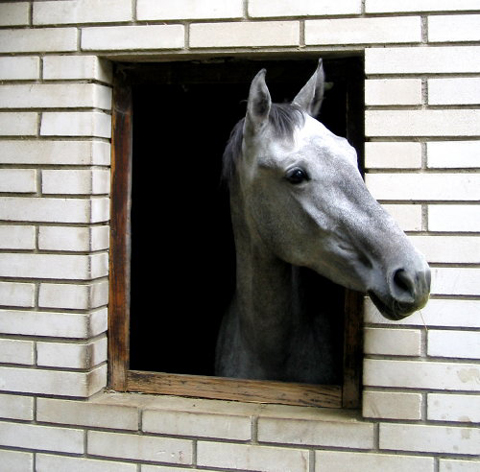
By Scott Rowe in the Ontario, Canada Barrie Examiner.
Recent studies have revealed something that has mystified the horse world since man first domesticated his equine friends some 5,000 plus years ago.
Occasionally, a new born foal that has normal coloured markings such as black, or bay, or brown, may start to turn grey at an early age and then eventually turn almost white.
This process resembles how peoples’ hair turns grey as they become older, but can happen relatively quickly in the grey horse and usually by the time they are only six to eight years of age.
In history, early societies thought this strange phenomenon was a sign of purity or divine intervention and the animal was worshiped or revered.
White horses became the favourites of royalty and great leaders, as evidenced by the many portraits and paintings down through the ages which depict them under saddle.
Now scientists from Uppsala University have determined that these peculiar horses all share a common gene that is thought to have mutated from a single horse way in the distant past.
By researching the genetic makeup of a large number of greys, this common denominator was found to be unique to them alone. Remarkably, it is thought that as many as one in ten horses may carry this trait in some breeds.
The study of this gene factor was interesting because it also revealed that grey horses have an increased risk of developing melanoma, the same skin cancer found in humans.
About 75% of the grey horses older than fifteen years of age usually have a benign form of melanoma that occasionally turns malignant. This discovery may offer insight into molecular pathways that cause tumour development.
In the well-known children’s song that goes: “The old grey mare she ain’t what she used to be…” it could be argued that there are no old grey mares because, by then, they would have turned to white.
It becomes even more complicated by the fact that there actually are true white horses that are born that colour at birth.
